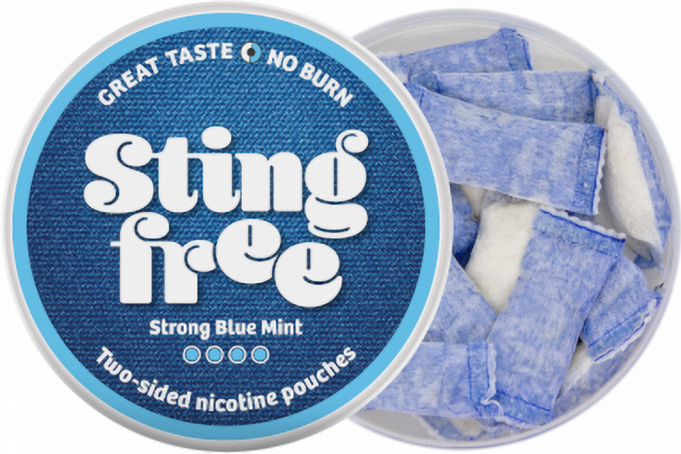Not long ago, UK-based public health agency Knowledge·Action·Change (K·A·C) launched the tenth in a series of Briefing Papers as part of its Global State of Tobacco Harm Reduction (GSTHR) project, called “What are nicotine pouches?”
Nicotine pouches are tea bag-like pouches which are placed under the upper lip for about 30 to 60 minutes depending on one’s preferred nicotine dose. While similar to snus, they have the added benefit of being tobacco-free, odour-free, and unlike snuff they do not require spitting. More importantly, while snus contains tobacco, nicotine pouches (NPs) are made from vegetable fibres infused with nicotine and a range of flavours.
The product is growing in popularity worldwide as their tobacco harm reduction potential, particularly for low and middle-income countries with a high prevalence of high-risk oral tobacco, is becoming more and more evident. However they have been banned in some countries including New Zealand. The new GSTHR briefing paper looked into the data and latest information about the available scientific evidence, market data, and regulations for this safer nicotine product.
A new and improved product
This inspired Wiberg to patent the idea. However, he was rejected by a number of brands, which led him to the decision of setting up his own company. The result is Stingfree products, which come with an impermeable barrier on the gum side of the pouch, to prevent the familiar burning stinging sensation of these types of products.
Stereotypes about smokeless tobacco
In fact, a comprehensive survey conducted by Sting Free AB in 2022, found that 67% of female respondents as well as 53% of the men, found the stinging sensation in the oral products unpleasant. To this effect, Sting Free AB’s vision is that this Stingfree-technology will become an alternative standard for all nicotine pouches, with the aim of helping smokers find the transition from cigarettes to smokeless tobacco products such as snus or tobacco-free nicotine pouches, easier.
Meanwhile, TobaccoReporter has recently revealed that although of all adult smokers, about 45% are women, and 55% men, only about one-third of those who switch to oral tobacco products are women. Studies have indicated that there are stereotypes about smokeless users, namely stemming from the fact that in the past oral tobacco products had to be spat out. Another factor concluded from the responses was the burning sensation and oral irritation caused by these products with comments such as “irritation”, “burn”, “hurts my gums” etc.
Vaping Post tested this first hypothesis on a small scale by asking 8 females who are either current or former smokers, about their perceptions of nicotine pouches. Four of these interviewees were not aware that NPs were any different than snus, three of them felt that the products were not very feminine or classy and one of the women felt indifferent. Two of the women who mistook NPs for snus, felt that oral tobacco is too masculine. “Just like cigars seem to fit better on men, products like snus look quite ‘butch’ and out of place on feminine women!” said Sarah, 27. In fact, a recent (2022) UK study concluded that “pouch use was over four times more common among men than women” in the UK.
UK THR advocates ask for sensible regulations for nicotine pouches
In other news, last November the New Nicotine Alliance (NNA) wrote to Health Secretary Matt Hancock in support of sensible and risk proportionate regulations for nicotine pouches. While Action on Smoking and Health (ASH) called on the government to close a “loophole” in how nicotine pouches are regulated in order to prevent minors from having access to the products.
ASH spokesperson Hazel Cheeseman asked local authorities “to ban free samples and sales to under-18s, introduce limits on strength and to restrict marketing of the pouches.” The NNA spoke in support of these proposals. The group wrote to Health Secretary, Matt Hancock, in February and August, 2020, and again to Public Health Minister, Jo Churchill, in January 2021 on the subject. In their letters they emphasised the significant potential benefits of the pouches, yet highlighted the importance of setting regulations in order to single out and penalise the “unscrupulous sellers in the UK who are acting recklessly.”
Recent figures released by ASH indicate that the number of people using pouches in the UK is so far relatively small. The survey of 13,000 people, reported that about one in 25 had tried nicotine pouches with awareness of the products being highest among 18 to 24-year-olds, with 45% knowing about the products.
They added that even though “there is no evidence that currently these nicotine pouches are in the hands of under 18s”, it is necessary to prevent this from becoming a trend. Moreover, it would make sense for the government to commission a toxicological study by the Committee on Toxicity (COT) to fully assess the risks vs benefits of these products, in the same way it has done for heated tobacco products.
NPs carry less health risks than snus
Meanwhile, a 2021 study published in Drug and Chemical Toxicology, evaluated the toxicant levels of Nicotine Pouches (NPs), and compared them to snus and nicotine replacement therapy products (NRTs).
Titled, “Chemical characterization of tobacco-free “modern” oral nicotine pouches and their position on the toxicant and risk continuums,” the current study analyzed NPs for 24-26 compounds applicable to oral tobacco. Furthermore, the estimated daily toxicant exposure from NP use was calculated and then compared to the toxicant profile of NPs, as well as that of tobacco/nicotine products spanning the risk continuum.
The compiled data indicated that when compared to cigarettes, Swedish snus was found to carry significantly fewer health risks. Compared with snus, NPs had lower levels of 10 HPHCs and comparable/undetectable levels of a further 13. The researchers found that across the product categories analyzed, NPs and NRTs had the lowest toxicant profiles and estimations of relative toxicant exposure.
To this effect, the researchers concluded that the use of NPs appears to expose users to lower levels of toxic compounds than Swedish snus, and should therefore be placed close to NRTs on the tobacco/nicotine product toxicant delivery continuum.
Improved biomarkers in smokers who switch to Velo
Similarly, a 2022 study commissioned by major tobacco company British American Tobacco (BAT) aimed to look for and identify any differences in early indicators of smoking-related diseases between users of Velo (BAT’s nicotine pouches) and smokers.
The research team evaluated the exposure to certain toxicants and early indicators associated with smoking-related diseases in participants who have been exclusive Velo users for over six months and compared them with those of groups of smokers, former smokers, and never-smokers.
Published in Biomarkers Journal, the results indicated that consumers exclusively using Velo for over six months observed significant improvements in several biomarkers of exposure and biomarkers of potential harm relevant to smoking-related diseases compared to the adults who smoked.
Earlier this year, BAT (BATS.L) reported a 7% rise in full-year adjusted revenue, and also a dividend increase of 1.0% to 217.8 pence and a 2 billion pound share repurchase programme for 2022.
The tobacco company also reported a 51% rise to 2.05 billion pounds in adjusted sales of its “new categories” product line which includes e-cigarettes, heated tobacco and oral nicotine products. Despite the fact that this division has not generated any profit yet, BAT said that it was on track to report revenue of 5 billion pounds and profitability by 2025.
Dutch THR Advocates Urged to Submit on Consultation About Nicotine Pouches Ban




![Recent Conference Urged Nations Worldwide to “Quit [Smoking] Like Sweden”](https://www.vapingpost.com/wp-content/uploads/2024/04/vape-conference-238x178.png)







